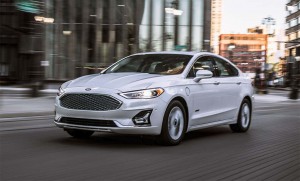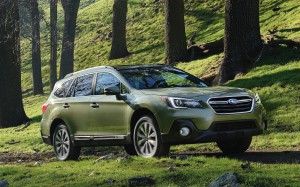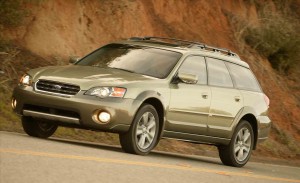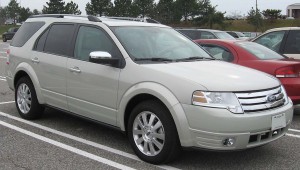
The Ford Fusion sedan will disappear in a few years, but will be replaced by some sort of crossover or wagon bearing the same name.
Ford is taking the first big step towards a future without passenger cars, confirming it will kill off the current sedan version of the midsize Fusion line. But the nameplate will live on, insiders hinting it will be replaced by some sort of crossover or sport wagon.
In April, Ford CEO Jim Hackett announced the automaker would drop the U.S. versions of such familiar nameplates as the Taurus, Fiesta and Focus, as well as Fusion, a controversial move reflecting the sharp decline in conventional passenger car sales as millions of American motorists switch to pickups, SUVs and other light trucks.
Fusion is the one model that will remain in the U.S. market, but when it is replaced, around the beginning of the next decade, it will be in a very different form. While company officials have not yet disclosed what that will be, indications are that we will see something closer to a tall wagon or hatchback, some sources suggesting the redesigned Fusion will be along the lines of the Subaru Outback, rather than a more SUV-like crossover-utility vehicle.
That design could play well for Ford on several levels, not only helping boost retail demand, but also providing a vehicle that the automaker could use as part of its new mobility services plans. Ford, like rivals Fiat Chrysler Automobiles, General Motors and Daimler AG, wants to bring out autonomous vehicles, some of which will likely be used for ride-sharing services.
(Ford pulls out of the Geneva Motor Show. Click Here for the story.)
The decision to pull out of the passenger car market reflects one of the most significant shifts the auto industry has experienced in decades. Light trucks, in general, now account for about two-thirds of U.S. new vehicle sales, SUVs alone topping 50% and growing. And even with rising fuel prices momentum continues to favor light trucks.
“We are continuing to see a strong shift out of cars and into SUVs,” Mark LaNeve, who oversees Ford’s U.S. sales operations, explained during a July 3 conference call. “Industry car sales are running at levels we haven’t seen since the recessionary period of 2009.”
The surge in truck sales hasn’t been bad for Ford’s bottom line, the F-Series pickup, in particular, generating the bulk of its earnings. But having been slow to update models like the Fiesta, Focus, Fusion and Taurus, Ford’s passenger car sales have plunged. Worse, it has had a hard time convincing its passenger car customers to switch to light truck models like the Edge, Escape and Explorer. Data from Kelley Blue Book, for example, has found that Fusion owners are more likely to trade in on imports like the Honda CR-V and Toyota RAV4.
Several Ford passenger car models, the Taurus and Fiesta, will vanish from U.S. showrooms by mid-2019. The automaker has been vague about when it will pull the plug on the Fusion sedan – and when the replacement will arrive, but sources indicate the transition is likely in 2020 or, at the latest, 2021.

The 2019 Outback reveals what the Fusion could be when it "morphs" from a sedan to a wagon or crossover.
(Click Here for more about the strong auto sales in June.)
It helps that the latest generation of light trucks are, in fact, largely ute-like bodies sharing passenger car platforms. That, said Jim Farley, Ford president of Global Markets, will “give customers the utility benefits without the penalty of fuel economy.”
In years past, Ford might have opted to kill off the Fusion name entirely. It essentially did that when it dropped Taurus and replaced it with the midsize Fusion in 2006. (It subsequently brought Taurus back as a full-size model in 2008, but sales have never lived up to initial expectations and Taurus was widely expected to be dropped even if Ford remained in the sedan market.)
Automakers have grown more reluctant to abandon nameplates that aren’t tarnished by serious faults. That’s because of the high cost of introducing all-new nameplates. Ford’s LaNeve has noted that bringing a fresh name for a mainstream product to market can require an investment topping $200 million. For an established nameplate, however, the costs drop substantially, as there is already a high level of awareness among potential buyers.
Whether the new Ford Fusion will connect with buyers is far from certain, but the automaker could take comfort from watching what happened when Subaru first introduced the Outback model in 1994. Back then the import brand was struggling to survive in the U.S. market. Desperately needing a new approach, it essentially raised the suspension on its familiar Legacy model, adding SUV-like cladding. It then turned to Australian actor Paul Hogan, known for his film work as “Crocodile Dundee,” to promote it. Sales skyrocketed.
The Outback is now Subaru’s best-selling model, sales up 5.5% in an otherwise slow first-half of 2018. According to website Autodata, Outback could wind up outselling the Fusion this year.
(To see more about Ford jumping into the taxi business, Click Here.)
One of the concerns that analysts have, however, is what would happen if the market finally reaches saturation point and buyers start looking for the next big thing. Could they shift back to sedans? While the trend data suggest that’s unlikely, Ford would have the ability to tap into what it’s doing in other markets and bring back some passenger car models within a year or two, largely depending on whether it would have the available capacity, a senior Ford executive noted on background.



As I say every time one of these “X automaker is killing off cars” articles comes up, Ford will live to regret this decision. Eventually, people will want cars, and Ford won’t have any to sell.
Apparently none of the other American manufacturers will either.
This is most likely a small drop in the bucket but what does FOMOCO do for NASCAR fans? Yes they have the Mustang running in the Xfinity Series but the Fusion runs the big-boy Monster Energy Cup Series. Does Mustang now run that too?
For S&G, sure, it would be a hoot to see a shooting-brake, i.e. station wagon running the circuit, but c’mon.
Or does it even matter? NASCAR hasn’t been “stock” in decades, with all these being sticker and template cars, but still… While there really isn’t a “win on Sunday, sell on Monday” mentality anymore, some are loyal / diehards and own an F150 and a Fusion, maybe a Mustang.
Just something to think about